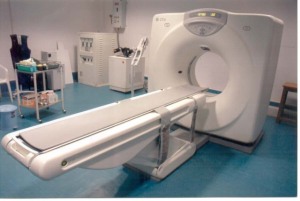by
Carol Ko, Staff Writer | January 15, 2013

Yearly CT scans now recommended
for patients with high lung cancer risk
On Monday, the Medical Imaging and Technology Alliance (MITA) commended the American Cancer Society for endorsing low-dose CT scans for patients at high risk for getting lung cancer.
"Irrefutable evidence supports the value of advanced imaging in reducing mortality associated with lung cancer," said Gail Rodriguez, Executive Director of MITA, in a statement. "MITA calls on the U.S. Preventive Services Task Force to re-evaluate their rating for low-dose CT scans for those at risk of lung cancer."
Last Friday, the American Cancer Society issued a new recommendation urging smokers who have smoked a pack of cigarettes a day for 30 years to consult with their doctor to see if they should get a yearly CT chest scan.



Ad Statistics
Times Displayed: 109208
Times Visited: 6638 MIT labs, experts in Multi-Vendor component level repair of: MRI Coils, RF amplifiers, Gradient Amplifiers Contrast Media Injectors. System repairs, sub-assembly repairs, component level repairs, refurbish/calibrate. info@mitlabsusa.com/+1 (305) 470-8013
Its recommendation comes after much debate over the risks, benefits, and efficacy of CT scans. One study, for example, showed that the scan may result in a high percentage of false alarms that require invasive and potentially harmful diagnostic procedures, including bronchoscopies and needle biopsies.
However, mounting evidence suggests that low-dose CT scans are more likely to detect new lung tumors than regular chest X-rays. According to a study published by the National Lung Screening Trial, low-dose CT chest scans could reduce lung cancer deaths by at least 20 percent in a high-risk population of current and former smokers ages 55 to 74.
"The evidence is clear: access to advanced imaging technologies saves lives," said Tim Trysla, Executive Director of the Access to Medical Imaging Coalition (AMIC). "The ACS endorsement of LDCT for high-risk individuals represents an important step forward in reducing mortality and health care costs associated with this devastating disease."
Lung cancer is the leading cause of cancer-related death in the U.S. and kills 160,000 people every year. Because survival rates among patients who fail to detect the cancer early are very low, it's particularly important to screen high-risk patients for early detection and treatment.

